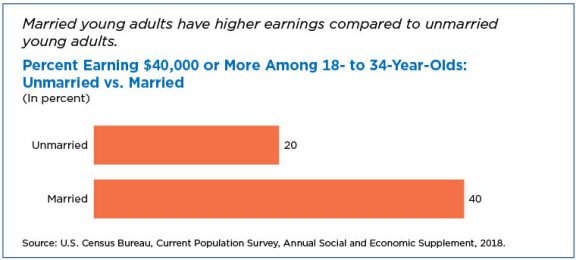
Brought to you by WBIW News and Network Indiana
Last updated on Tuesday, November 20, 2018
(UNDATED) - For some young adults, living together has become a more common option than marriage, according to new U.S. Census Bureau estimates.
The annual America's Families and Living Arrangements tables package shows that the proportion of young adults who live with an unmarried partner continues to rise.
Among those ages 18-24, cohabitation is now more prevalent than living with a spouse: 9 percent live with an unmarried partner in 2018, compared to 7 percent who live with a spouse.

In 2018, 15 percent of young adults ages 25-34 live with an unmarried partner, up from 12 percent 10 years ago.

How Times Have Changed
Fifty years ago, in 1968, living with an unmarried partner was rare. Only 0.1 percent of 18- to 24-year-olds and 0.2 percent of 25- to 34-year-olds lived with an unmarried partner, according to the Current Population Survey.
The measurement of cohabitation from 1968-1995 was less precise. The estimate came from an indirect measure of opposite-sex partners sharing living quarters, and the late 1960s through the early 1970s had particularly low reports of cohabitation.
Also, when comparing 2008 to 2018, years in which the Current Population Survey asked a direct cohabitation question, cohabitation only increased for 25- to 34-year-olds and slightly decreased for 18- to 24-year-olds.
So, although cohabitation has increased for young adults over the last 50 years, it is important to note the limitations in measurement and that certain periods of time did not produce increases in unmarried young adults living together.
In contrast to the rising rates of cohabitation, the proportion of young adults who are married has declined over time.
Today, 30 percent of young adults ages 18-34 are married, but 40 years ago, in 1978, 59 percent of young adults were married.

Income Makes a Difference
Marriage rates today are less uniform across socioeconomic groups, as the marriage rates for less educated groups who tend to earn less have fallen at a much faster rate than more educated groups since the 1970s.
Adults who marry today tend to have a more favorable economic situation relative to other groups. For example, 40 percent of married young adults ages 18-34 earned $40,000 or more, compared to just 20 percent of unmarried young adults.
Among young adults ages 25-34 - the age range at which it is more common to get married and earn at least $40,000 a year - 43 percent of married individuals are at this earnings level compared to 34 percent of unmarried individuals.
A recent Census Bureau study suggests that counties where young adults have higher socioeconomic characteristics, marriage rates tend to be higher as well. Many young adults experienced a lack of economic security after the Great Recession. This may have contributed to more young adults living with a partner and not marrying.
The 2018 America's Families and Living Arrangements Tables Package uses data from the 2018 Current Population Survey Annual Social and Economic Supplement, which has collected statistics on families, households, and living arrangements for more than 60 years.
Benjamin Gurrentz is a Survey Statistician in the Census Bureau's Fertility and Family Branch.
1340 AM WBIW welcomes comments and suggestions by calling 812.277.1340 during normal business hours or by email at comments@wbiw.com
© Ad-Venture Media, Inc. All Rights Reserved.